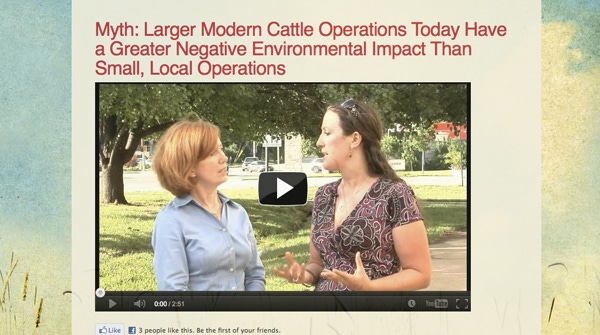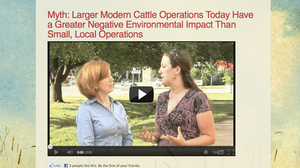Judith Capper, Ph.D., Washington State University, clears the common misperception that larger, modern cattle operations have a greater negative environmental impact than small, local operations.
February 14, 2012

The American Meat Institute (AMI), in conjunction with the American Meat Science Association (AMSA), today launched the fifth installment of seven new myth-crushing videos. The new video aims to set the record straight about myths associated with the environmental impact of large modern cattle operations.
 The video, featuring Judith Capper, Ph.D., associate professor, department of animal sciences, Washington State University, clears the common misperception that larger, modern cattle operations have a greater negative environmental impact than small, local operations.
The video, featuring Judith Capper, Ph.D., associate professor, department of animal sciences, Washington State University, clears the common misperception that larger, modern cattle operations have a greater negative environmental impact than small, local operations.
“That��’s a common consumer misperception,” Capper says. “The first thing we have to understand is that generally the bigger the operation, the more modern it is, the more accepting of technology, the lower the land use, the water use and the carbon footprint.”
Capper also notes than many consumers are not aware of the transportation efficiencies that we have gained over the last hundred years or so.
“Actually, to truck beef, for example to Kansas to Iowa, has a far, far lower carbon footprint than to air freight it, for example, or to drive locally to a farm, buy it and take it home again,” Capper notes.
Capper also addresses the common myth that grass-fed beef has a smaller environmental impact than beef finished on corn or grain.
“(The grass-fed system) has a greater number of days from birth to harvest, the animals grow more slowly and that means overall they use more land, more water, more energy, more fuel and have a far greater carbon footprint than animals grown on corn,” Capper says.
Capper’s video is available at http://www.meatmythcrushers.com/.
You May Also Like



